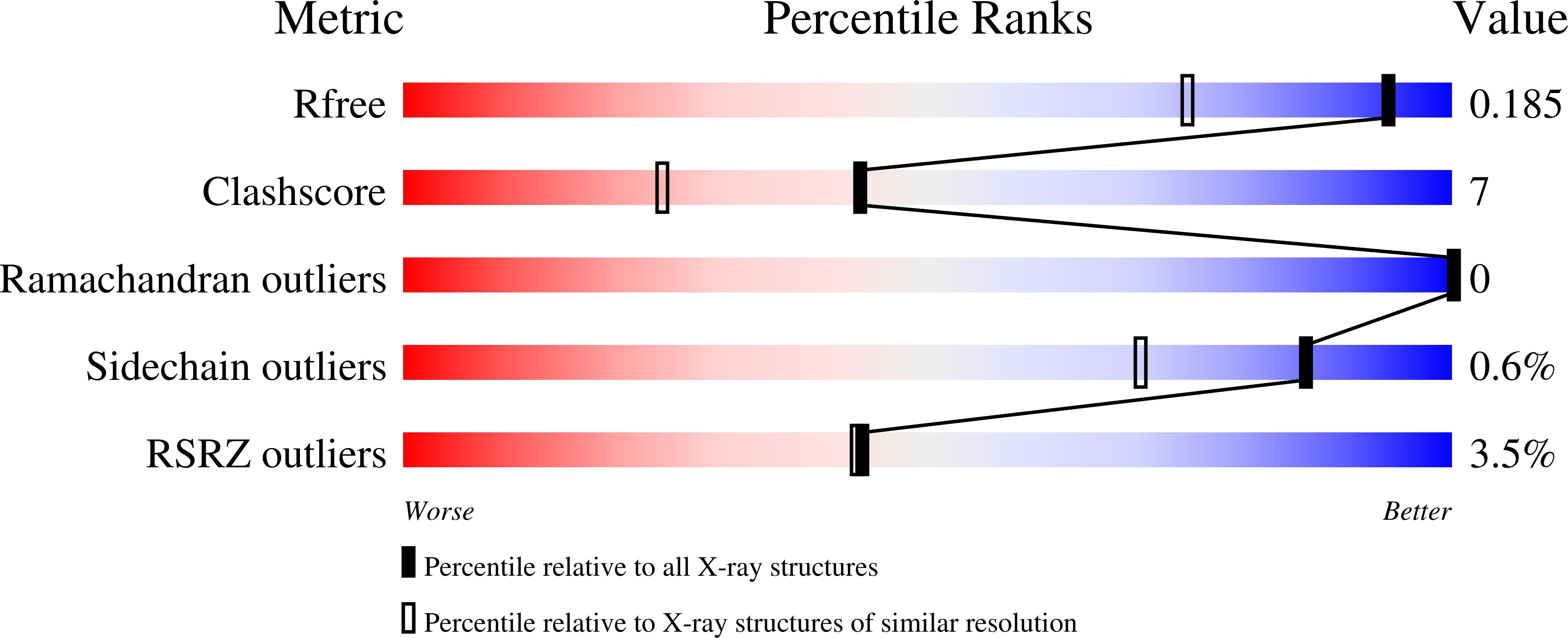Crystal structures of GII.10 and GII.12 norovirus protruding domains in complex with histo-blood group antigens reveal details for a potential site of vulnerability.
Hansman, G.S., Biertumpfel, C., Georgiev, I., McLellan, J.S., Chen, L., Zhou, T., Katayama, K., Kwong, P.D.(2011) J Virol 85: 6687-6701
- PubMed: 21525337
- DOI: https://doi.org/10.1128/JVI.00246-11
- Primary Citation of Related Structures:
3ONU, 3ONY, 3PA1, 3PA2, 3Q38, 3Q39, 3Q3A, 3Q6Q, 3Q6R, 3R6J, 3R6K - PubMed Abstract:
Noroviruses are the dominant cause of outbreaks of gastroenteritis worldwide, and interactions with human histo-blood group antigens (HBGAs) are thought to play a critical role in their entry mechanism. Structures of noroviruses from genogroups GI and GII in complex with HBGAs, however, reveal different modes of interaction. To gain insight into norovirus recognition of HBGAs, we determined crystal structures of norovirus protruding domains from two rarely detected GII genotypes, GII.10 and GII.12, alone and in complex with a panel of HBGAs, and analyzed structure-function implications related to conservation of the HBGA binding pocket. The GII.10- and GII.12-apo structures as well as the previously solved GII.4-apo structure resembled each other more closely than the GI.1-derived structure, and all three GII structures showed similar modes of HBGA recognition. The primary GII norovirus-HBGA interaction involved six hydrogen bonds between a terminal ¦Áfucose1-2 of the HBGAs and a dimeric capsid interface, which was composed of elements from two protruding subdomains. Norovirus interactions with other saccharide units of the HBGAs were variable and involved fewer hydrogen bonds. Sequence analysis revealed a site of GII norovirus sequence conservation to reside under the critical ¦Áfucose1-2 and to be one of the few patches of conserved residues on the outer virion-capsid surface. The site was smaller than that involved in full HBGA recognition, a consequence of variable recognition of peripheral saccharides. Despite this evasion tactic, the HBGA site of viral vulnerability may provide a viable target for small molecule- and antibody-mediated neutralization of GII norovirus.
Organizational Affiliation:
Structural Biology Section, Vaccine Research Center, National Institute of Allergy and Infectious Diseases, 40 Convent Drive, Building 40, Room 4508, National Institutes of Health, Bethesda, MD 20892, USA.



















